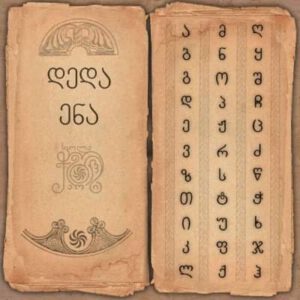Georgian is one of the most beautiful languages in the world, known for its rich vocabulary. Many foreigners, whether living in Georgia or abroad, express a strong interest in learning and speaking Georgian.
For this reason, our course is designed for people of all ages. Through this course, anyone can achieve the desired level of Georgian language proficiency.
The course includes both theoretical and practical grammar material, providing a wide range of vocabulary with explanations and situational examples for each word.
One of the key advantages of this course is the abundance of Georgian video material. These materials streamline the learning process and allow students to adapt to the peculiarities of the Georgian language as much as possible.
You already know that we have a deep respect for our national values, so the course materials include cartoon or documentary segments that effectively and clearly present important aspects of Georgian history and culture.
The Georgian language course is divided into six levels: A(A1-A2) – elementary, the so-called basic knowledge; B(B1-B2) – independent mastery of the language, which implies correct writing, reading and speaking; C(C1-C2) – free mastery of the Georgian language, which involves the ability to think in Georgian.
A1- Elementary Level
- At this language level, the learner has command of simple communicative words and phrases, and has the ability to conduct simple dialogues.
A2- Basic Knowledge of Language
- Students at this level have a much larger vocabulary and learn the basics of grammar, which helps them to speak correctly without grammatical errors. They improve their reading skills and can read and write correctly.
B1/B2-Intermediate Language Proficiency
- At the indicated levels, students have a sufficient level of knowledge to be able to participate effortlessly not only in everyday conversations but also in discussions on a wide range of topics. They demonstrate a strong command of grammatical elements and a high level of familiarity with idiomatic expressions and cultural nuances specific to Georgian culture. Moreover, they can confidently engage in conversations with a wide audience and even give presentations if required.
C1/C2-Professional Level
- These levels of language proficiency involve professional and comprehensive knowledge of the spoken and written language. The student can independently overcome obstacles in speaking without assistance, and most importantly, at this stage the student begins to develop the ability to think in Georgian.
3 Reasons Why You Should Learn Georgian
 If you enjoy new challenges and learning new things, then a Georgian language course is definitely for you. There are many reasons why learning Georgian will equip you with special skills, but for now, we will share with you the top three reasons.
If you enjoy new challenges and learning new things, then a Georgian language course is definitely for you. There are many reasons why learning Georgian will equip you with special skills, but for now, we will share with you the top three reasons.
- The Georgian alphabet is one of the most perfect alphabets among the oldest unique alphabets of the world. There are 33 letters in the modern Georgian alphabet. There are 5 vowels and 28 consonants. Each phoneme has a corresponding grapheme.
- Unlike other languages, Georgian has no upper or lower case letters and is written exactly the way it is pronounced.
- What makes the Georgian alphabet truly unique are its three distinct scripts: Asomtavruli, Nuskhuri and Mkhedruli.
April 14 is Georgian Language Day!



